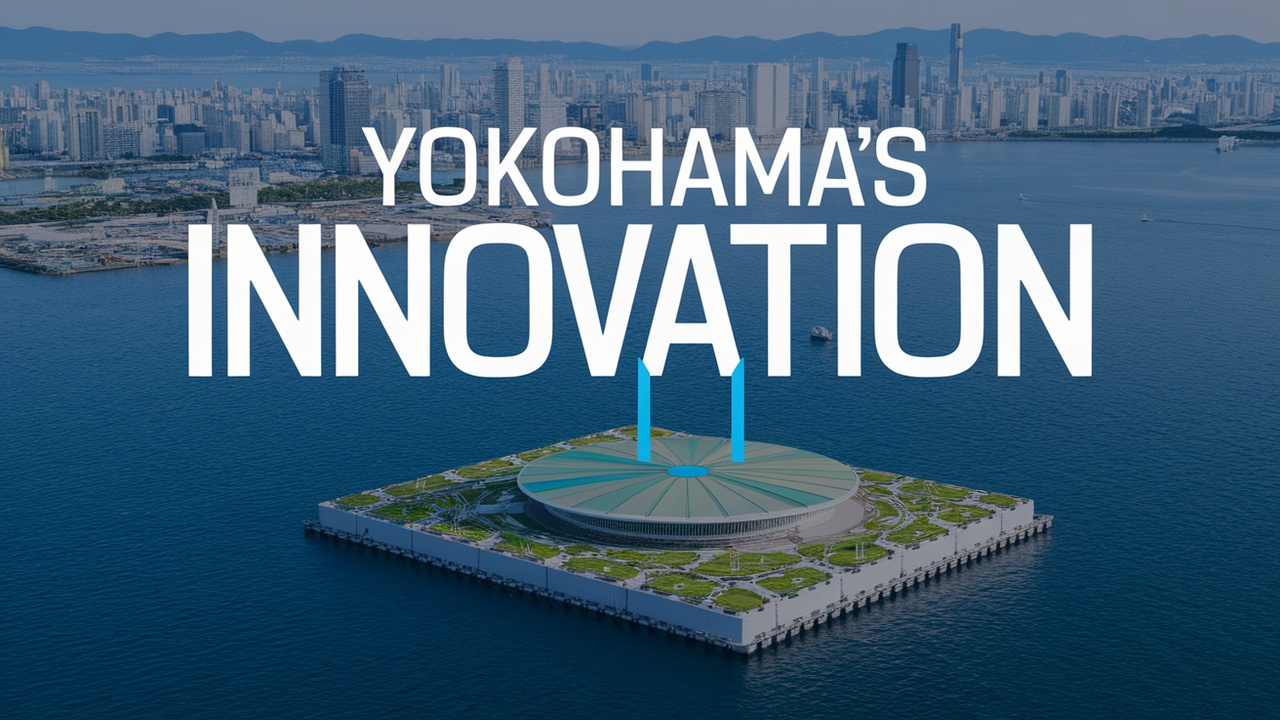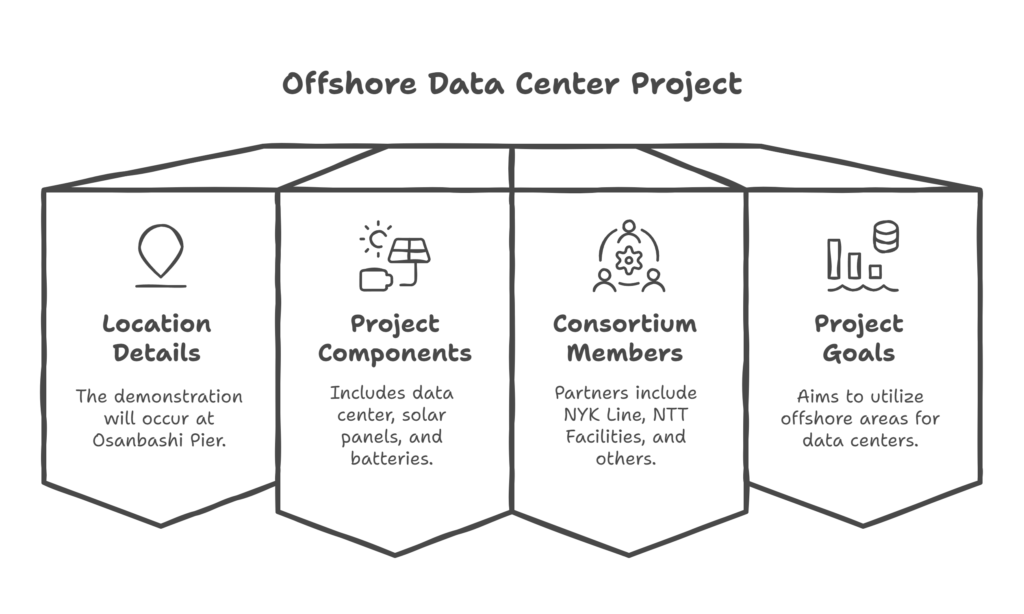New Designs Help Japan Unveil Floating Green Data Center Offshore
A Japanese consortium on March 27, 2025 in Yokohama announced plans to to launch a demonstration of an offshore floating green data center.

Aiming to run the facility on 100% renewable energy, the initiative is led by NYK Line. The project pushes ahead amid soaring demand for data centers stemming from artificial intelligence and digital transformation.
Project Details
The demonstration will be held, on a mini-float, 25 meters by 80 meters, outside Yokohama’s Osanbashi Pier. It will include a container-type data center, solar panels and battery storage systems. Planned for fall 2025, the test will assess whether the facility can run entirely off renewable energy. The group will also test how well equipment stands up to damage from salt and its stability in an offshore environment.

NYK Line, NTT Facilities, Eurus Energy Holdings, MUFG Bank and the City of Yokohama are in the consortium. They entered into a memorandum of understanding to work together on this groundbreaking initiative. The project aims to address the issues with land-based data centers, including limited space and lengthy construction duration. This means utilizing Japan’s large offshore areas efficiently, the team says.
Why Offshore and Green?
Data centers are essential to AI, cloud computing and digital services, but they gobble up vast amounts of energy. Power works well there but is very tight, particularly in urban areas. Offshore data centers can access renewable sources such as solar and, eventually, offshore wind farms. This lessens the use of fossil fuels and relieves pressure on terrestrial power systems.
The effort is aligned with Japan’s GX2040 Vision, a roadmap to decarbonize energy-intense industries. Such floating data centers could redefine sustainability. They also provide resistance to natural disasters, a major concern in earthquake-prone Japan. The test in Yokohama will deliver data on whether this model can go global.
“We want to build a data center with 100% renewable energy-powered operation,” said a NYK Line spokesman. “This could alter our digital infrastructure.”
Challenges and Opportunities
Constructing an offshore data center is no easy task. Salt water can erode equipment and keeping stability on water is difficult. The team will therefore use the demonstration to test potential solutions such as advanced coatings and stabilization technology. If they succeed, it could result in much larger facilities near offshore wind farms, maximizing the use of renewable energy.
The project also addresses practical matters. Because contractors are in short supply and zoning is limited, land-based data centers are experiencing delays. Offshore locations eliminate these obstacles and provide a swift go-live process. If successful, Yokohama’s waterfront could become a center of green tech innovation.
Elsewhere around the world, floating data centers have been visited. Nautilus, a U.S.-based firm, has water-cooled facilities in California and Ireland. Singapore’s Keppel proposes hydrogen-powered floating data center park Japan’s project is unique for its emphasis on renewables and disaster resilience, an effort to distinguish it from its competition for sustainable tech.
What’s Next?
And the demonstration in fall 2025 will be an important milestone. If the results are promising, the consortium will expand the concept across Yokohama’s marine areas. A decade or two out, they see data centers sitting alongside offshore wind farms and becoming self-sufficient digital nodes. It could make Japan a green tech leader.
The project could influence the architectural approach some other countries take to data centers. As AI and digital services expand, the need for sustainable solutions could not be more urgent. The Yokohama experiment could lead to offshore, renewable-powered facilities becoming the norm worldwide. For now, the world watches as Japan leads its first cautious step into this uncharted territory.